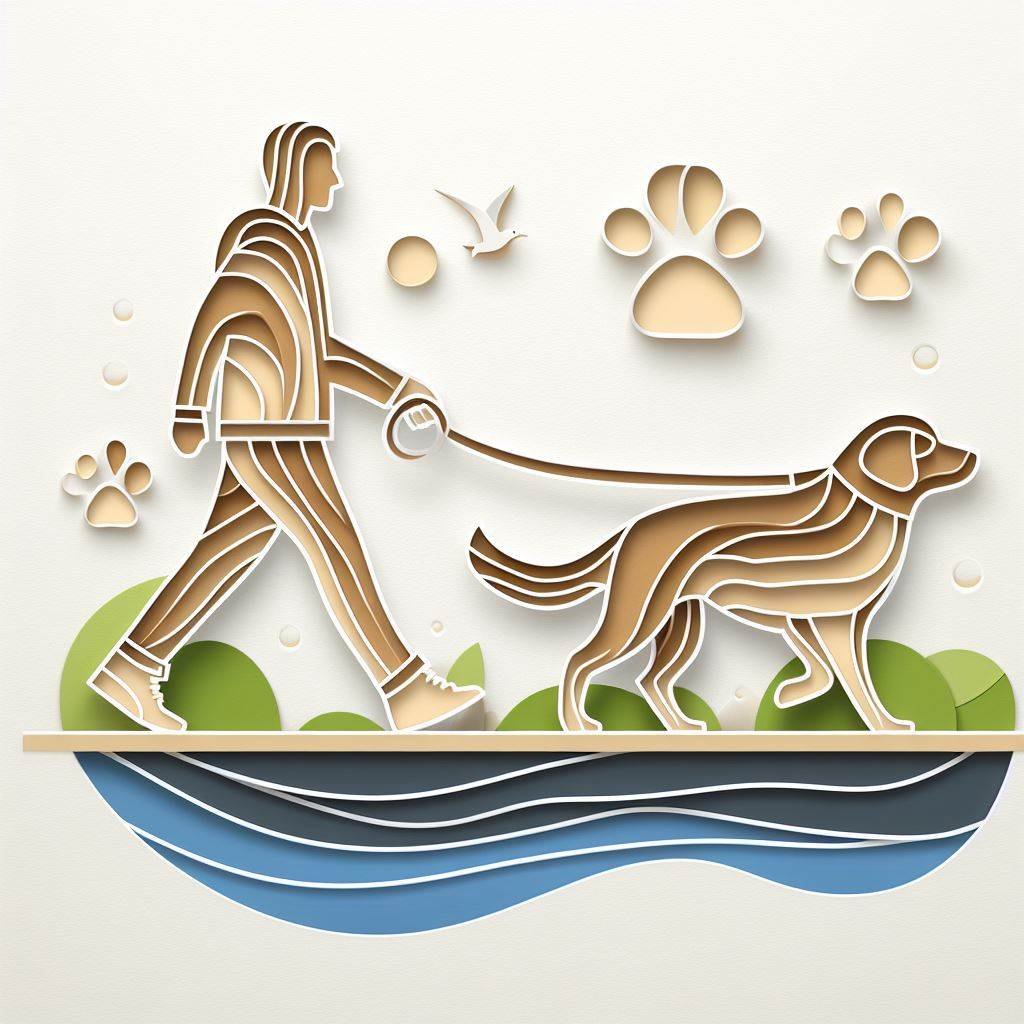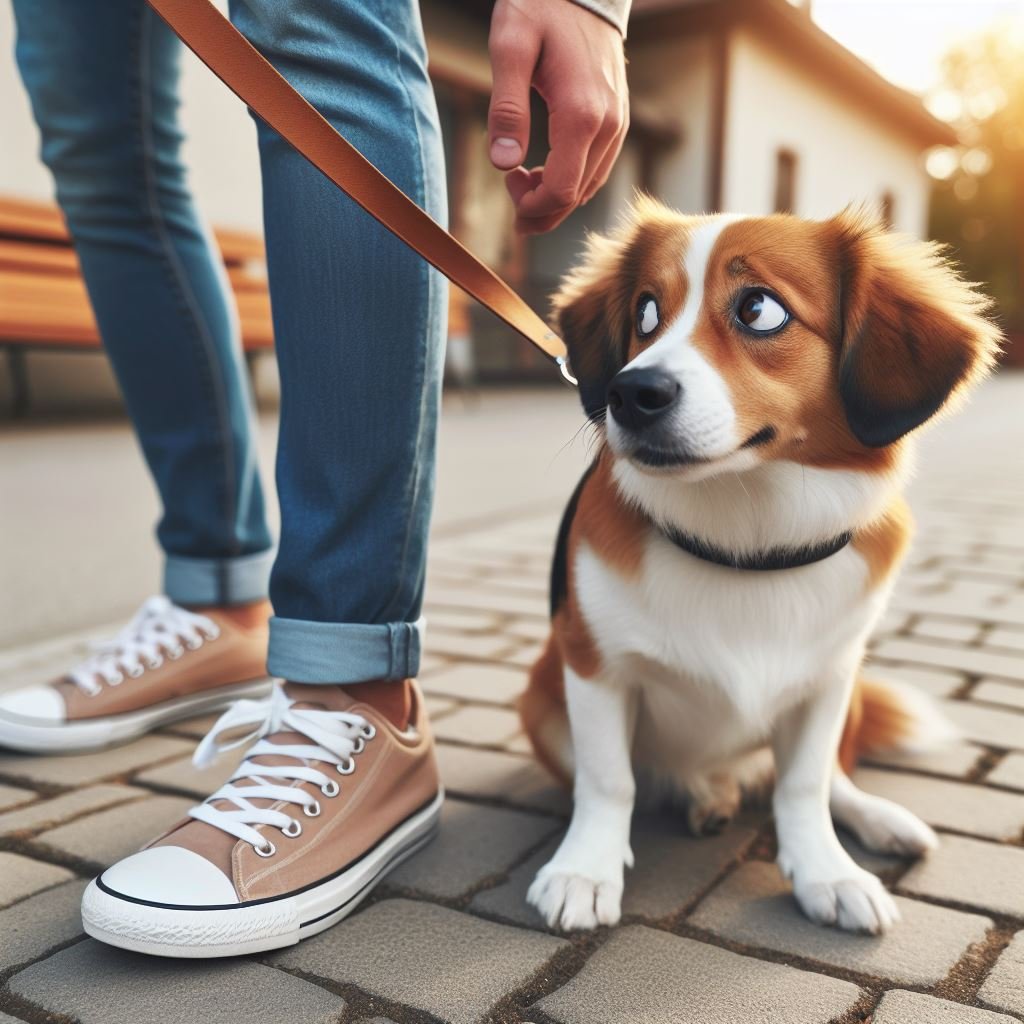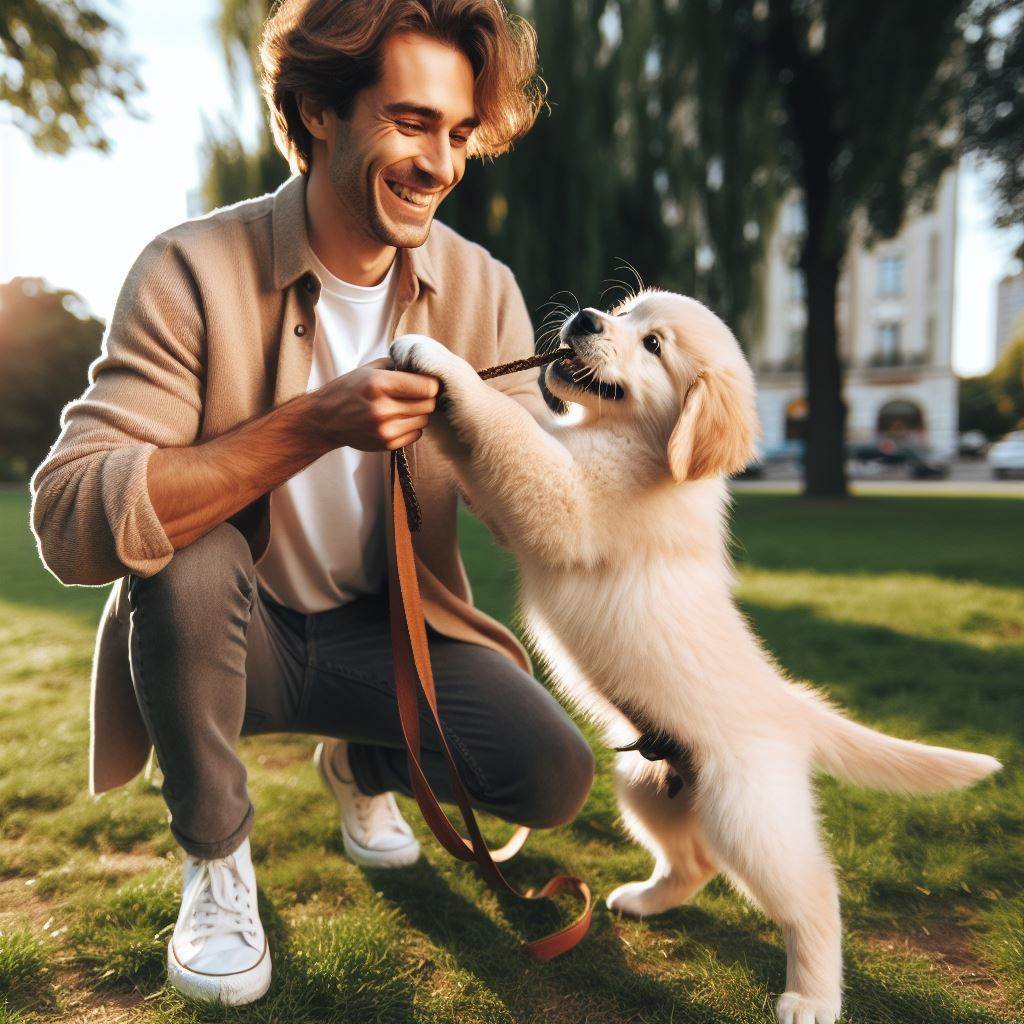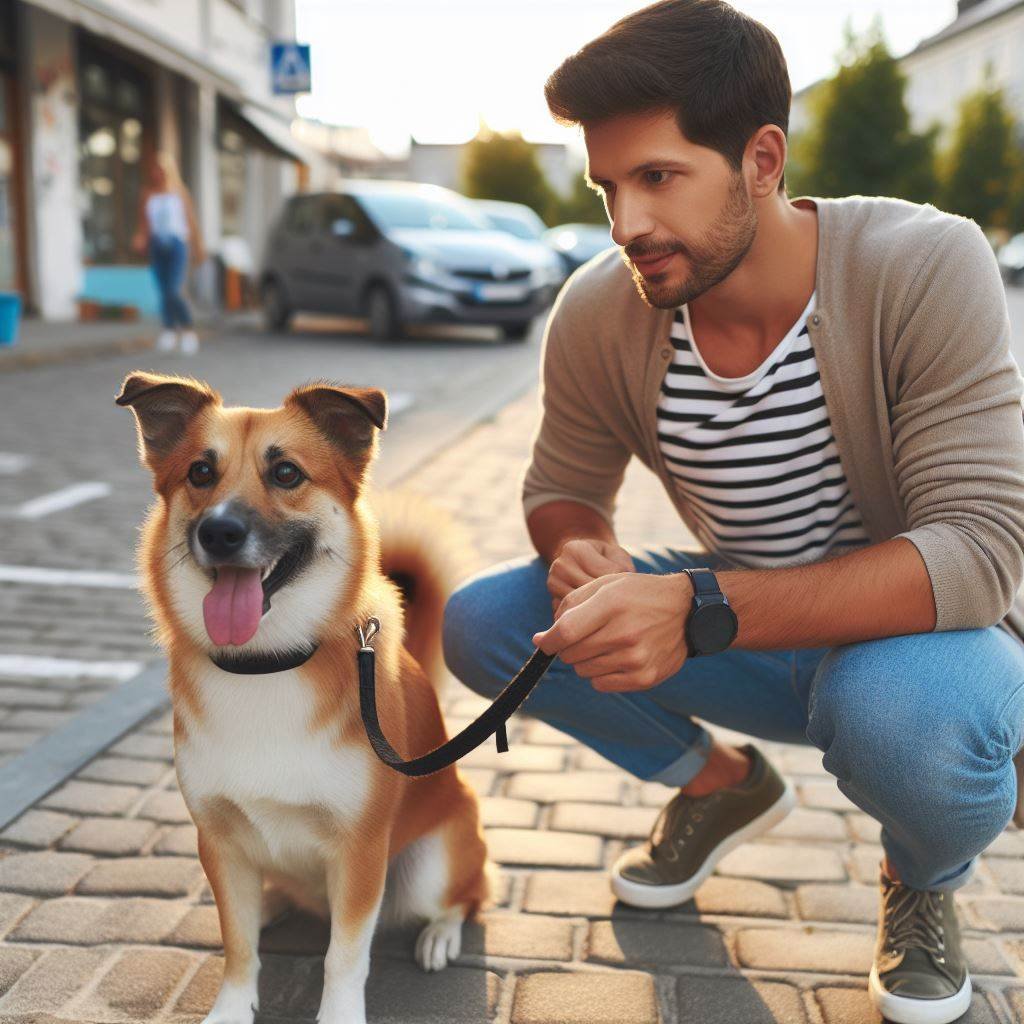

Intro
Training your dog to walk on a leash is one of the first and most important things you should do. However, it’s not always a walk in the park. If your dog walking on a leash experience is marred by your fur baby pulling, biting, or misbehaving, don’t despair. There are ways to train your dog to have a peaceful and enjoyable walk. In this post, we’ll guide you on how to teach your fur baby to walk on a leash.
Understanding Why Your Dog Is Acting Like a Rebel Without a Cause


It’s vital to identify the root of your dog’s resistance to leash walking. The behaviors you may perceive as rebellion often stem from their natural instincts or reactions to anxiety. A dog’s inherent drive to chase and explore can result in pulling on the leash. The confinement the leash symbolizes might trigger feelings of fear or unease in your dog, leading them to bite or exhibit other forms of misbehavior. To tailor an effective leash training approach, a solid understanding of your dog’s distinct behaviors is crucial. Your dog’s reaction to the leash is not defiance; it’s simply a response to a stimulus they are yet to understand. This perspective will guide you in selecting the most suitable leash and training techniques for your dog. Remember, each dog is unique, and what works for one might not work for another. Patience and understanding are your allies in this process.
Choosing the Right Leash – It’s Not Just About the Color


The leash you choose can make a significant difference in your dog’s leash training journey. It’s not just about picking one in your favorite color, but understanding its functionality and suitability for your pet. Leashes are available in a wide range of lengths and materials. If you’re at the beginning of the training process, opt for a standard six-foot leash made from nylon or leather. These offer enough length for your dog to explore without losing control.
While they may seem convenient, retractable leashes are not recommended for training. They can encourage undesirable habits such as pulling, and it’s harder to maintain control if your pet lunges.
It’s equally important to consider the size and strength of your dog when picking out a leash. For larger and stronger breeds, a heavy-duty leash might be the right choice, offering better control and durability. Conversely, for smaller breeds, a lighter leash could be more suitable and comfortable.
The correct leash isn’t a one-size-fits-all solution. It’s essential to match the leash to your dog’s individual characteristics, ensuring it facilitates a positive and effective leash training experience. Keep in mind, the leash isn’t a restraint, but a tool that promotes safety and bonding during your walks.
The Art of Making Your Dog Love The Leash


Fostering a positive association with the leash is key to leash training success. Begin this process by allowing your dog to become acquainted with the leash in a non-threatening way. This could involve leaving it in their play area or near their food bowl, allowing them to sniff, paw, and explore it freely.
Once your dog is comfortable with the presence of the leash, slowly introduce the concept of wearing it. You might attach it during fun activities or feeding times, helping your furry friend form positive associations.
Another effective strategy involves treating and praising your dog when they are wearing the leash. This can help reinforce the idea that the leash equates to good times and rewards, rather than restrictions. When your dog seems comfortable wearing the leash in a familiar environment, slowly introduce them to wearing it during short, enjoyable walks. This will further reinforce the positive associations while also getting them used to the sensation of walking on a leash.
Remember, it’s crucial that the leash isn’t viewed as a restriction, but as a conduit to exciting walks and adventures. With time, patience, and positive reinforcement, your dog will soon learn to love the leash, making walks more enjoyable for you both.
Mastering the Walking Technique – Baby Steps
Initiate your training within the confines of your home or a quiet outdoor space your pet is familiar with. Position your dog to your left, clutch the leash in your right hand and reserve some treats in your left hand. Adopt a soothing yet motivational voice to grab your dog’s attention. Should your fur friend start to pull on the leash, halt and remain immobile until they cease their pulling. If they walk well without straining the leash, laud them with a treat and a compliment.
This gentle approach not only allows your dog to understand that good behavior gets rewarded, but also helps them realize that pulling on the leash will not advance their walk. This strategy subtly discourages them from engaging in such behavior and they gradually learn to enjoy a relaxed walk. Remember, the aim is not to control, but to guide your dog to a pleasant and safe walk experience.
Dealing With Distractions – Squirrel!
Training your dog to maintain their leash manners amidst distractions like other animals, pedestrians, or an interesting smell, can be quite a challenge. These elements of surprise may cause your pet to forget their training, potentially reverting to pulling or biting the leash. However, this can be tackled by implementing a progressive approach to training.
To start, ensure initial training is conducted in a serene, distraction-free environment. This could be an isolated area of your house or a quiet part of your yard or local park. Your dog should be completely comfortable with walking on a leash in such settings before moving to more distracting environments.
After your dog has mastered walking on a leash in quiet areas, you can begin introducing distractions slowly. This gradual exposure will help them get used to the idea of maintaining their leash manners even when there are other appealing things happening around them.
Always have your bag of treats handy during these distraction training sessions. Each time your dog manages to keep their focus on you and remains calm despite the distraction, reward them with a treat and praise. This not only reinforces their good behavior, but also encourages them to associate distractions with positive outcomes when they react correctly.
Keep in mind, just as the overall leash training process, mastering distractions is also about patience, understanding, and repetition. The goal is to guide your dog towards becoming a well-behaved walker, no matter what they encounter on their walks.
Consistency Is Key – This Is Not A One-Time Gig
The task of leash training your dog isn’t a simple, one-off lesson; it’s an ongoing commitment that demands dedication, regularity, and consistency. Short, frequent training sessions are recommended over long, sporadic ones to effectively condition your dog’s behavior. As your dog progresses in their leash training, incrementally elevate the complexity of your walks. Introduce different paths, varying distractions, or longer durations, always in a controlled manner, to continue challenging your furry friend. Remember, reinforcing good behavior continually is imperative in training. Regular praises and treats help affirm the positive behaviors you want your dog to repeat during the leash walking experience. Therefore, maintain a consistent approach in your training techniques, walking routes, and your responses to your dog’s behaviors. Even when your pet has mastered the art of leash walking, continue reinforcing their good habits during walks. Over time, consistency in your approach will help cement these behaviors into your dog’s routine, making walks an enjoyable experience for both of you.


